
Odeonsplatz is a square in the center of Munich, which is one of the most beautiful and lively squares in the city.
Square Odeonsplatz underground station located on the Northern edge of Munich's Old town and is a kind of border of the pedestrian zone of the historic city and the starting point of the ludwigstraße street (Ludwigstraße).
The basis for the square was laid out under king Maximilian I of Bavaria on the ruins in 1791, the city wall and to replace Svabinsky gate (Schwabinger Tor) of the new area.
The current form of the square was determined by the king of Bavaria Ludwig I. In the design area actively participated the famous architect Leo von Klenze, who built in the North-Western part of the square is the concert hall "Odeon", which once was the most famous concert back in Munich and which has received the name of the area.
Odeonsplatz has traditionally been an important venue of parades and public events, including funeral processions and victory parades.
During the time of the national socialists in the ground-floor was chosen as the marches. The choice was made due to the events of 9 November 1923-called "Beer hall putsch": when the leaders of the Nazis, including Adolf Hitler, made a coup attempt and was stopped on the Odeonsplatz near Feldherrnhalle.
Together with the Central city square of Munich (Marienplatz), the Odeonsplatz still remains an important venue for community events, including the annual parade, Oktoberfest (Oktoberfestbier / Oktoberfestzug), which runs along the route through the Hofgarten.
Today, the square Odeonsplatz is almost entirely a pedestrian area. It is very lively and visited a place that was also called "la dolce vita", which means: "when visiting the square you can taste the "sweet life".
Around the area a unified ensemble concentrated the important sights of Munich.
View (to the South), the square Odeonsplatz and Feldherrnhalle. Left - wing facade of the Munich residence
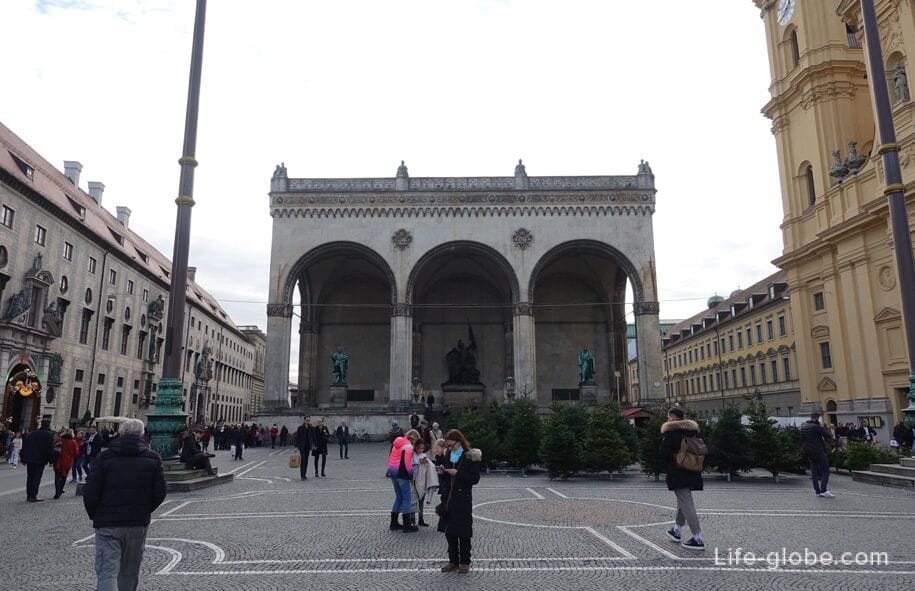
View (West) from the square Odeonsplatz on Teatinerkirhe left and in My Palace on the right
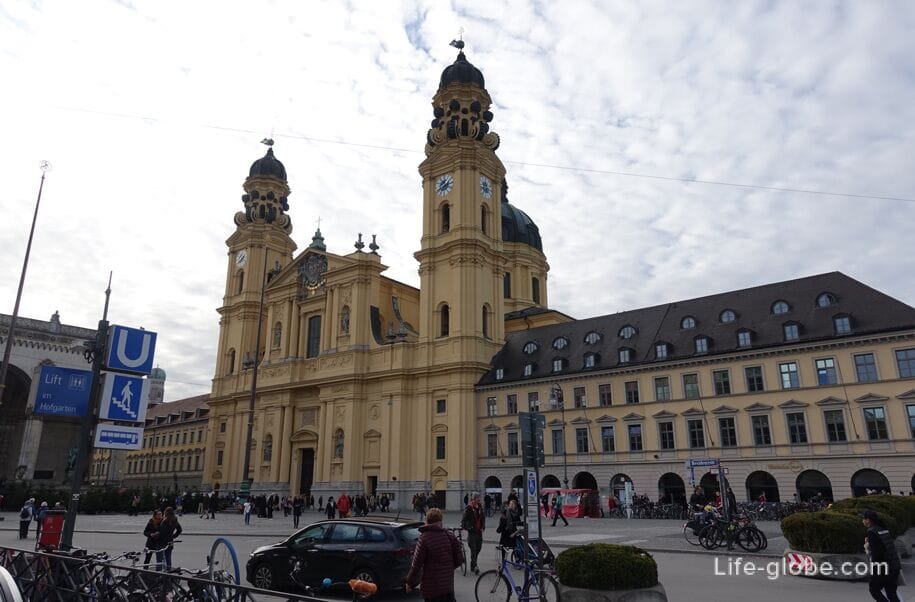
View (East) from the square Odeonsplatz underground station at the main entrance to the Hofgarten Park and the building of the Bazaar
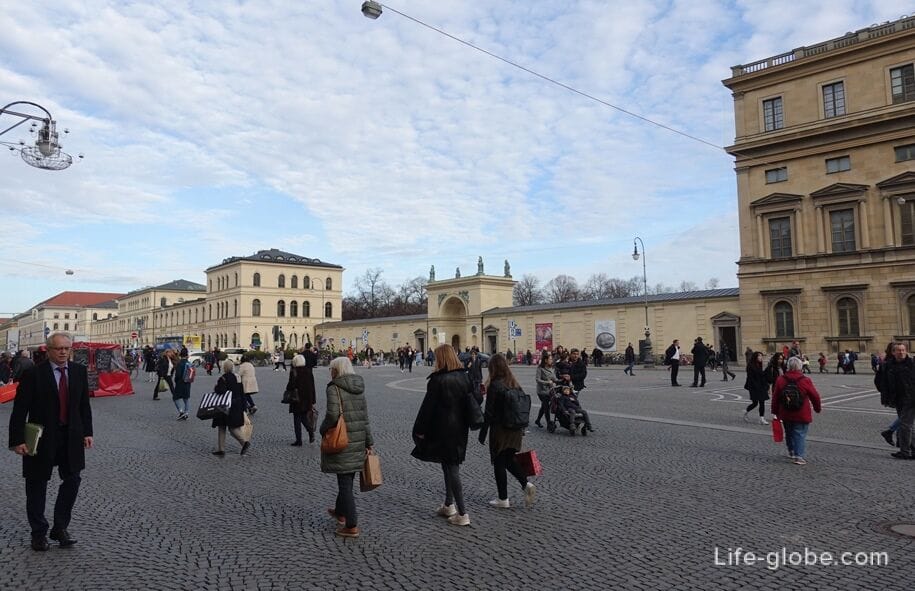
View (North) of the square Odeonsplatz and Ludwigstrasse street

Feldherrnhalle (Feldherrnhalle) - the so-called "Hall of the Bavarian generals", located in the southern part of the square the ground-floor which is a monumental loggia and a monument, a symbol of military glory of Bavaria.
The hall was built on behalf of king Ludwig I in the years 1841-1844, to honor the glory of the Bavarian army and its victorious generals.
In the Lodge are sculptured the images of the field Marshal: the Earl Johann Tilly and Prince Carl-Philip von Wrede, as well as a monumental sculptural group "a monument to the Bavarian army", established in memory of the Franco-Prussian war. Read more about Feldherrnhalle...
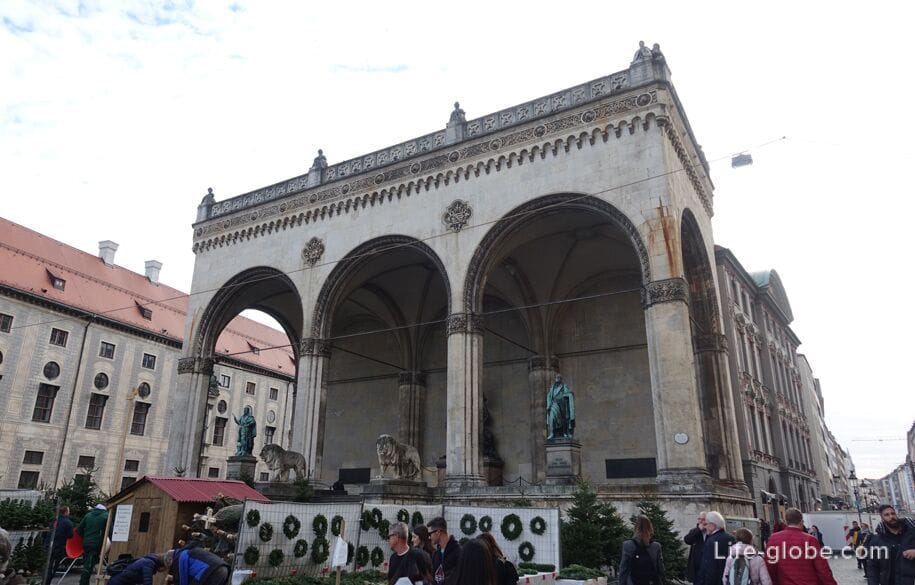
On the South side Feldherrnhalle adjacent to the Palace of Preising (Palais Preysing) - a former mansion in the Rococo style, which served as the residence of the counts of Pasinkov and built between 1723 and 1728 years. Read more about Palace of Praising...
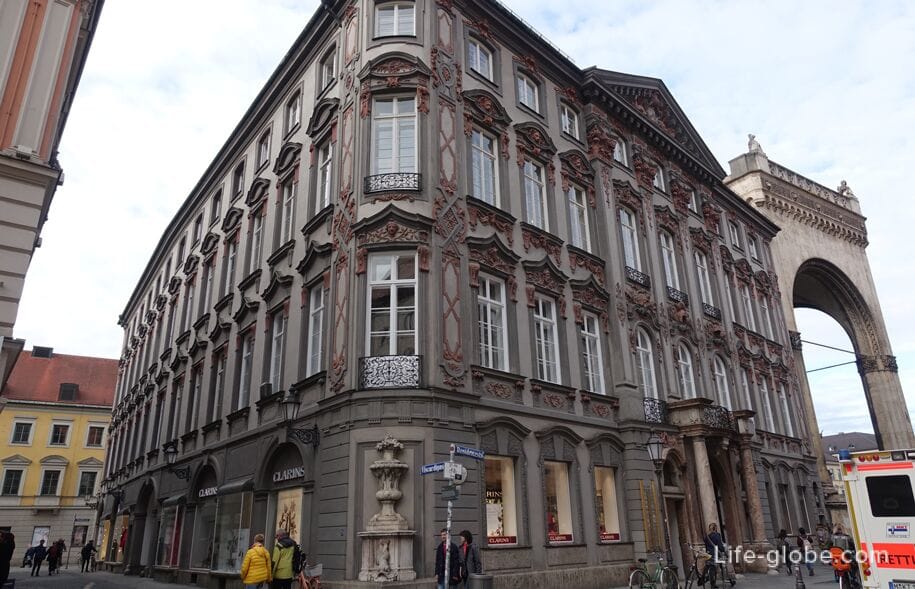
Teatinerkirhe Theatre Church of St. Caetano (free Wi-Fi. Kajetan) is a Catholic Church, which was a Palace, Cathedral, and Church of the order of Theatines.
The Church is located on the South West side of the Odeonsplatz, near Feldherrnhalle.
The Church was established in gratitude for the birth of the long-awaited heir to the Bavarian crown, Prince max Emanuel in 1662. The construction of the Shrine was carried on from 1663 to 1768 years.
The Italian style of the high Baroque, in which is erected the Church, became a model for other Church buildings in this style in Bavaria.
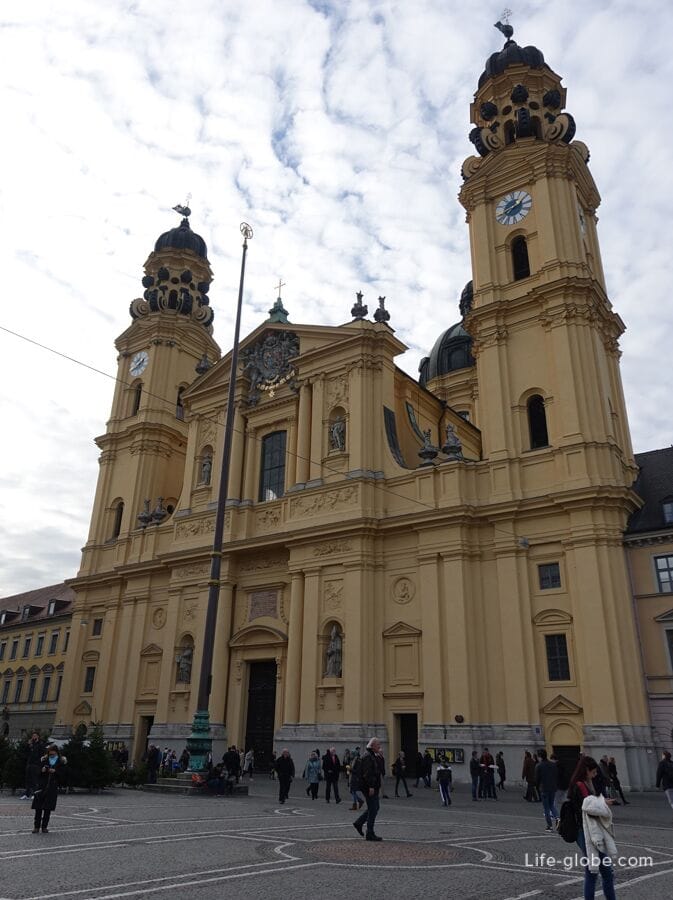
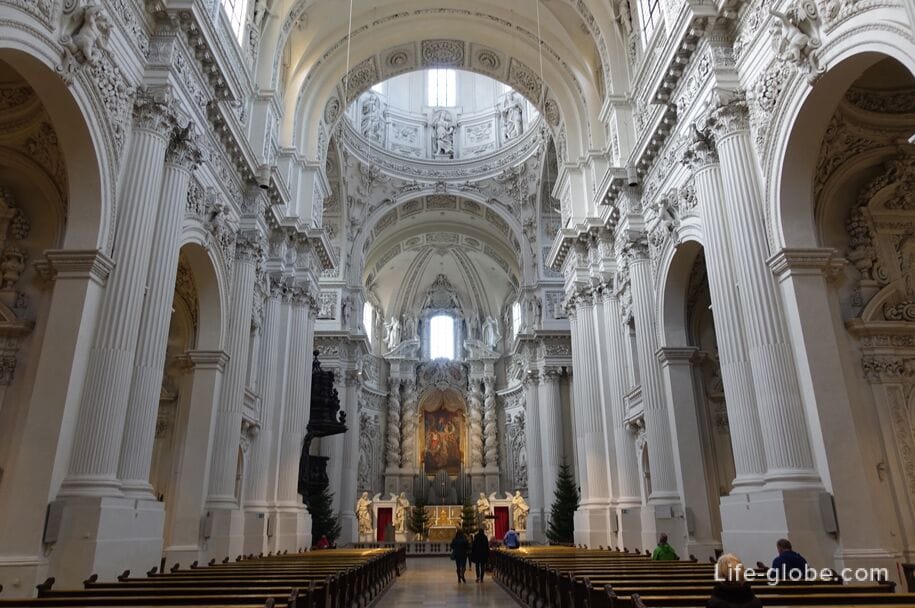
In Theatinerkirche is a tomb (Royal tomb), which served as tombs for the ruling Bavarian dynasty of Wittelsbach. Read more about Theatinerkirche...

At the intersection of the square with views over the street, Brienner straße (Brienner Straße) is My Palace (Palais Moy), which was built in the classical style since 1819, the project of the court architect Leo von Klenze.
The Palace had the interior lavishly decorated in different styles. During the history the building changed several owners.
During the Second world war the Palace was destroyed. In 1950 - 1952 the building was rebuilt, preserving, to a large extent, the classic model of the facade Klenze.
The Western facade of the former Palace overlooks the square Odeonsplatz, North - street Brienner Strasse, East into the inner courtyards of nearby buildings, and the South is adjacent to Teatinerkirhe. Read more about the Palace of Moy...
View of the Western and Northern facades of the Palace My
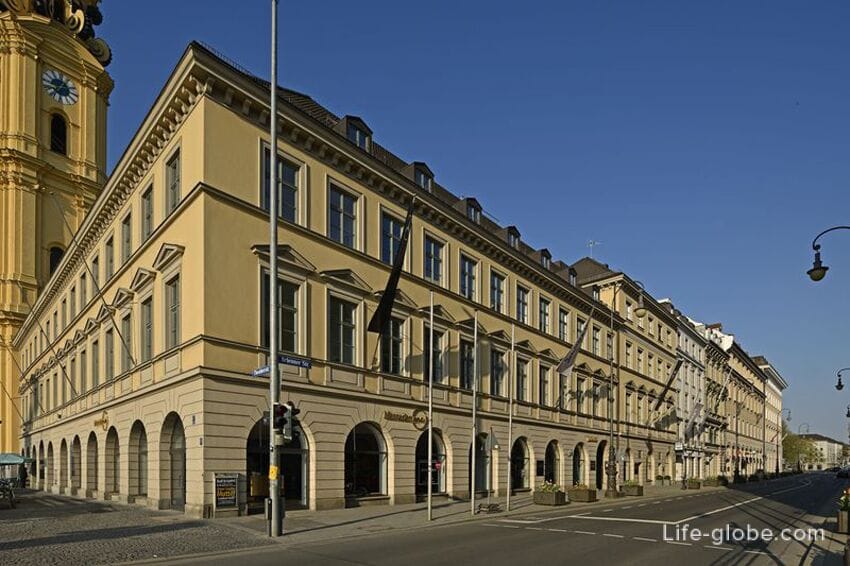
In the South-East facing with views over goes the wing of the Munich residence (Münchner Residenz).
Munich residence - the historic residence of the Dukes, electors and kings of Bavaria, the largest inner-city Palace in Germany.
Today Munich is one of the most important art museums in Europe.
The structure of the residence includes: 10 courtyards, residence Museum, the Treasury, the Munich state collection of coins, cuvillies-theater, library, court Church of All Saints Park and the Bavarian Academy of Sciences. Read more about Munich residence...
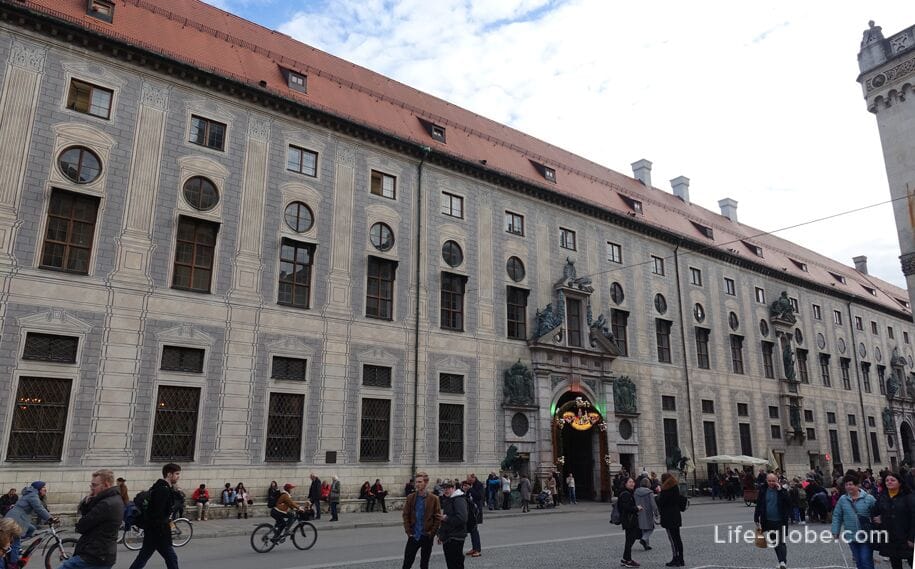
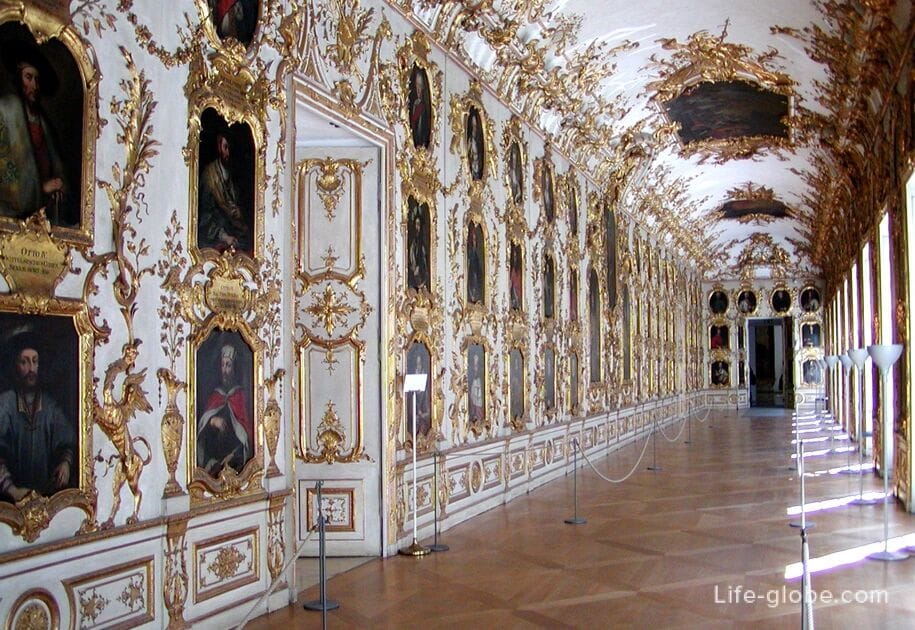
To the North-West wing of the Munich residence is adjacent to the main entrance to the Park Hofgarten ().
Hofgarten was originally built as a court garden (inner garden) in Munich residence from 1613 modeled on the gardens of the Italian Renaissance. Today it is a public Park.
The main entrance to the Park overlooks the Hofgarten, is a part of the wall and has five apertures: one large Central arch and four smaller side.
The inner side wall has entrances arcades, which are painted with murals related to the history of Bavaria. Read more about Hofgarten Park...
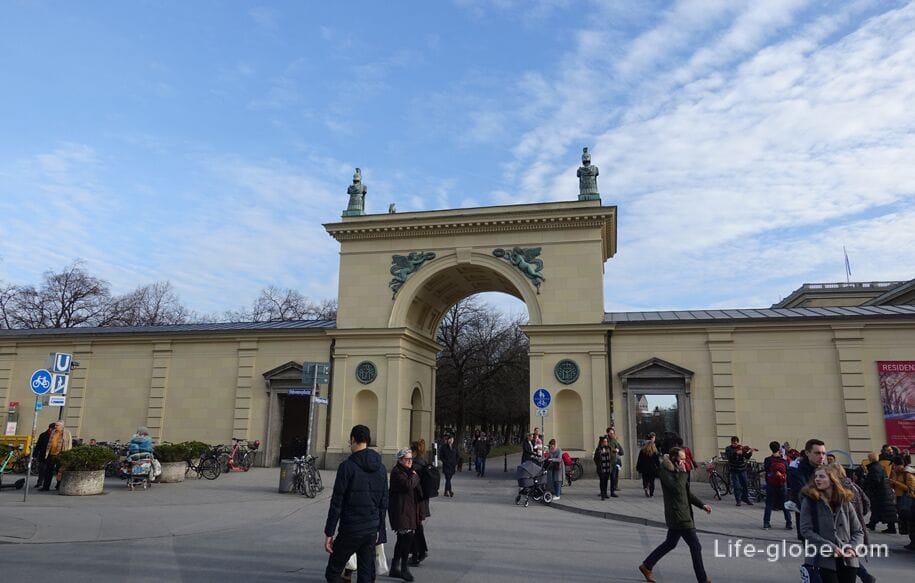
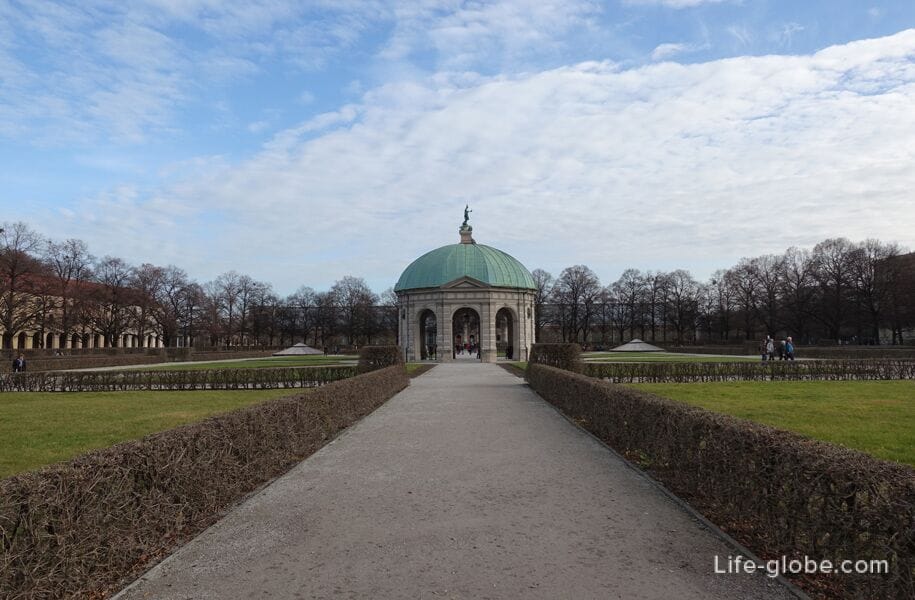
The building Bazaar (Bazargebäude) is adjacent to the main entrance of the Hofgarten Park on the North side of the latter, is a continuation of the wall of the Park and the outside faces Odeonsplatz.
The building of the Bazaar was built in the classical style in 1822 - 1826 according to the plans of architect Leo von Klenze as part of a new residential area and replaced the former building of the tournament pavilion.
"Market" symmetrical form separated by a Central pavilion and the North and South ends of the corner pavilions. Used for commercial purposes such as shops, cafes, restaurants, offices, etc.

North-Western part of the ground-floor marks a monumental equestrian statue of Ludwig I (Reiterdenkmal für Ludwig I).
The monument was inaugurated in 1862.

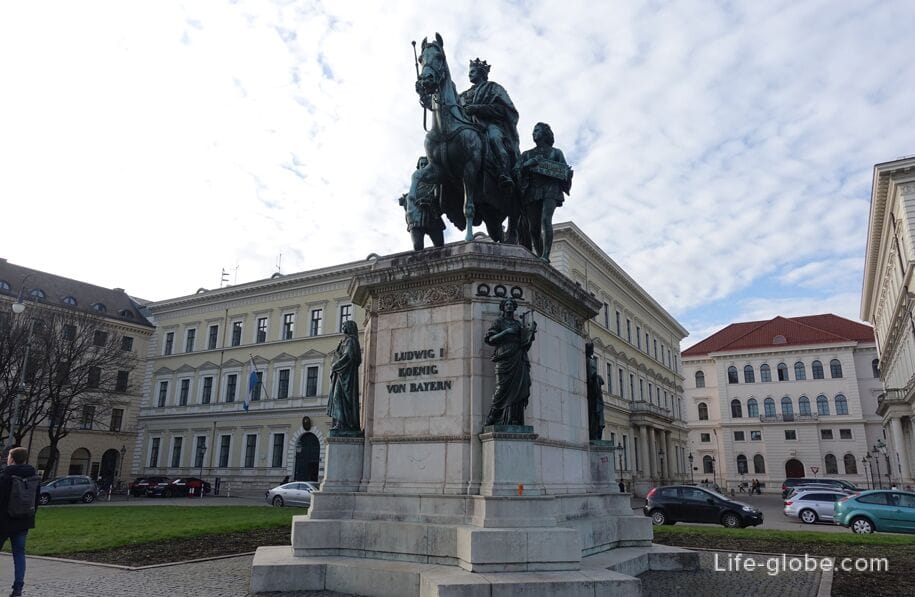
Today, the former concert hall Odeon (Odeon Konzerthaus) was built by order of king Ludwig I in the years 1826-1828 by the architect Leo von Klenze.
Original rear acted the concert and ball rooms.
The building of the concert hall was almost completely destroyed during the Second world war, then rebuilt with deviations from the original project and now in its walls is housed the Bavarian Ministry of the interior.
The former auditorium became the courtyard was closed with a glass dome in 2003-2007.
The former concert hall Odeon is a monument to Ludwig I, with its South-West side, at Odeonsplatz, 3.

The courtyard of the former concert hall Odeon
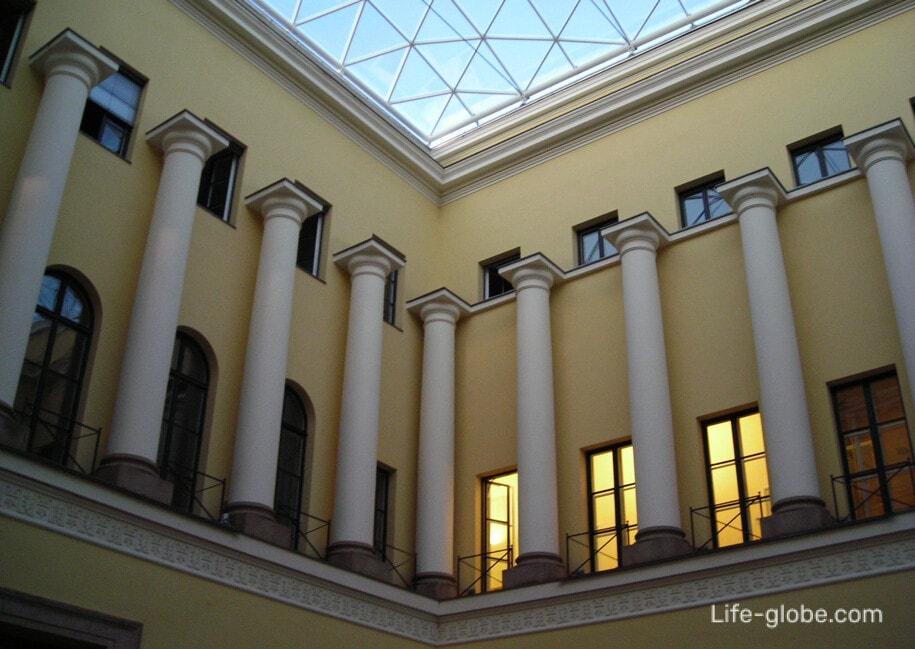
Palace Leuchtenberg or Leuchtenberg Palace (Palais Leuchtenberg) was built in the years 1817-1821 by the architect Leo von Klenze and was the residence of Duke Eugen von Leuchtenberg.
During the Second world war the building was heavily damaged. The free state of Bavaria acquired the ruined building in 1957 and demolished ruins. In the period from 1963 to 1968 a new building was constructed in the style and templates of the architect von Klenze.
Currently, the building housed the Bavarian state Ministry of Finance.
The former Palace of Leuchtenberg is located behind the monument to Ludwig I, with its North-Western side, at Odeonsplatz, 4.
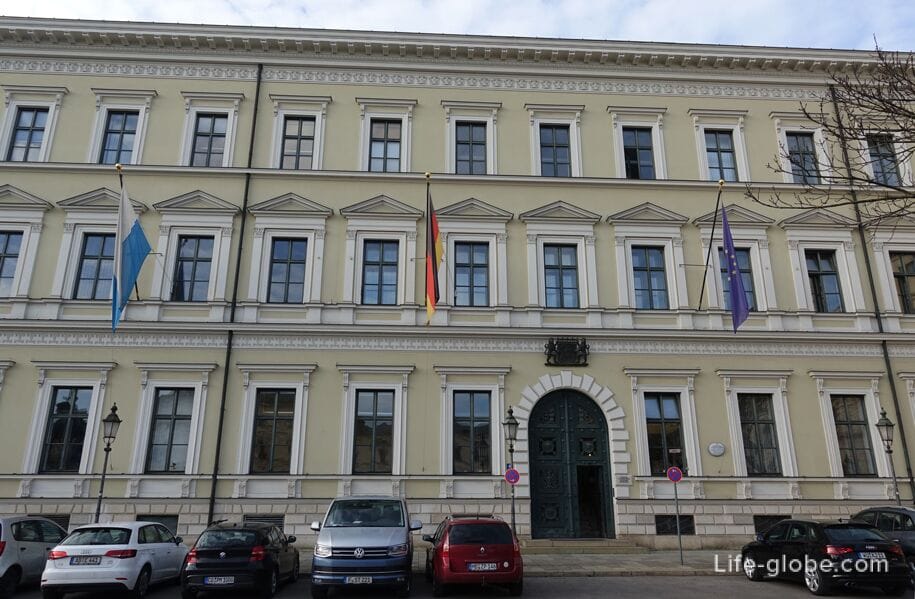
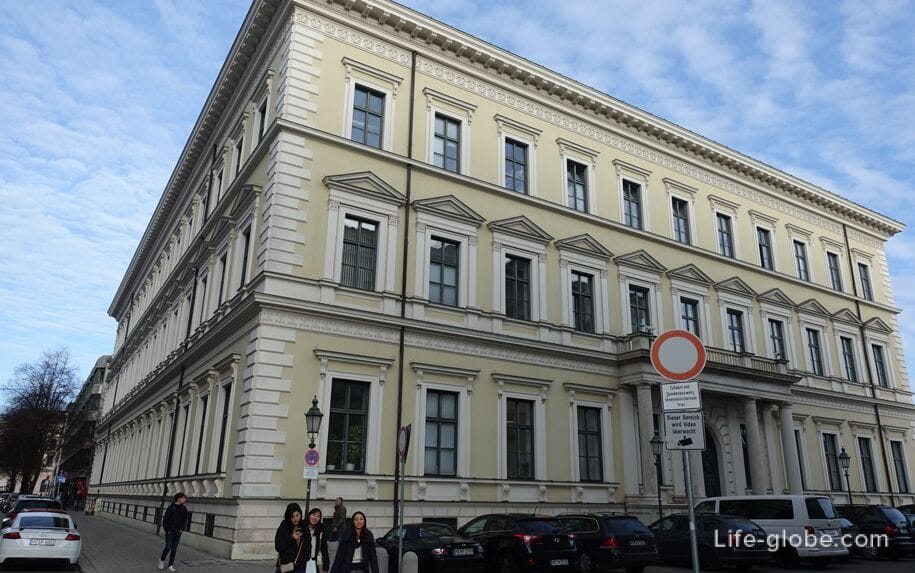
Courtyard
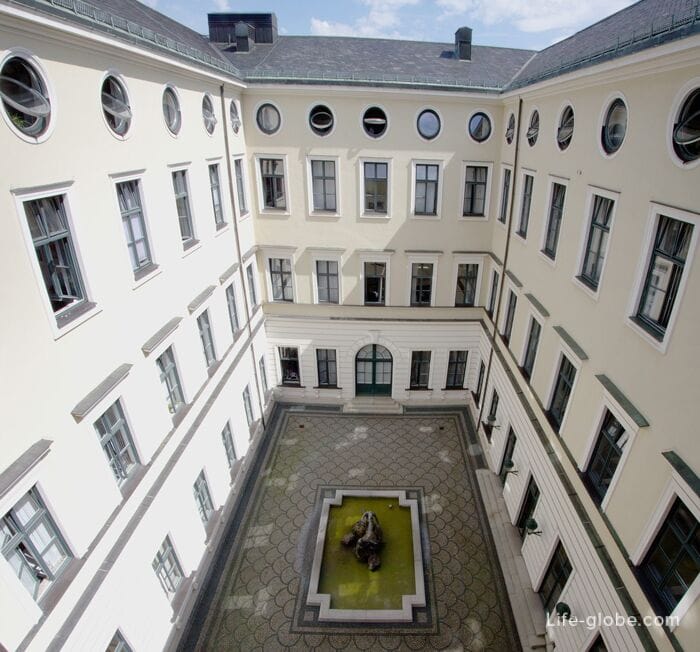
5-star hotel Bayerischer Hof with 5 restaurants, 6 bars and a Spa with a rooftop pool, sauna and gym.
The Atelier restaurant of the hotel has been awarded 3 Michelin stars. The Trader Vic's restaurant decorated in Polynesian style.
The rooms and suites: air conditioning, high speed Wi-Fi. Complimentary fruit basket and bottle of mineral water. Link to the hotel
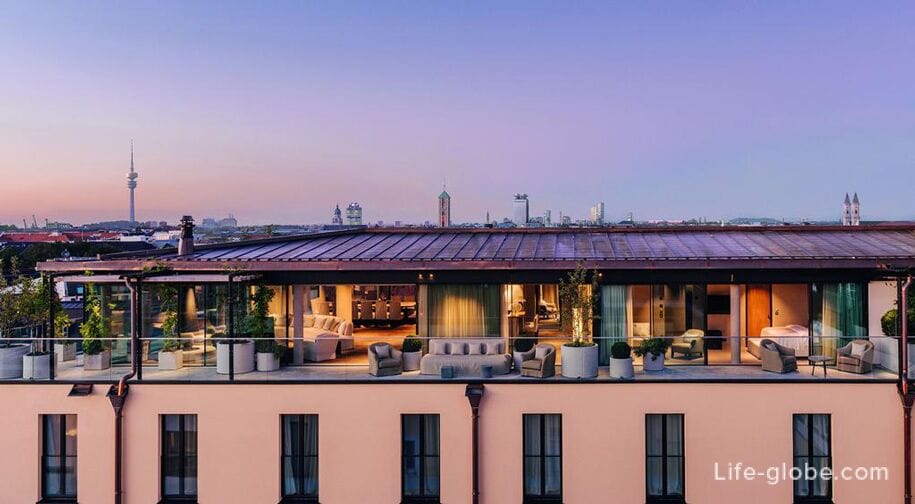
The family-run hotel Antares with Parking and Wi-Fi throughout.
The rooms: the flat-screen TV, soundproof Windows and doors. The private bathroom has a Hairdryer.
Room rates include Breakfast. Link to the hotel
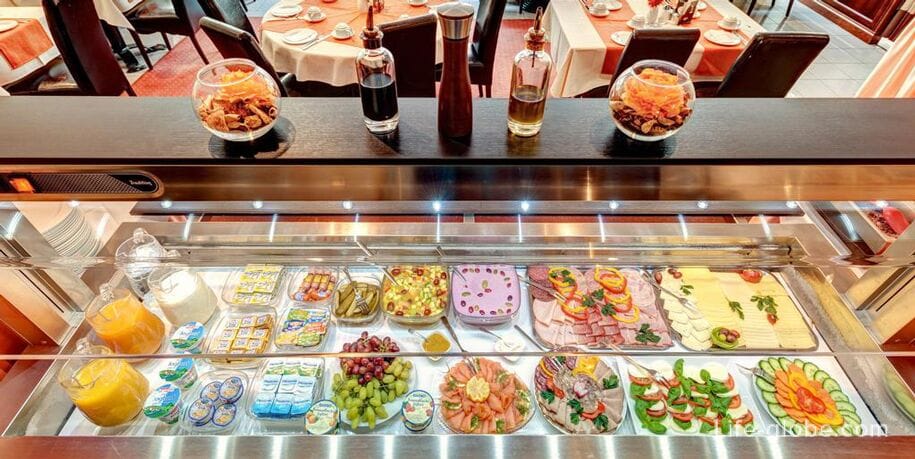
Modernes apartment Designerzimmer City of Munich with free Wi-Fi, heating and Elevator in the building.
In apartment: TV, washing machine, bedroom, kitchen and bathroom. The link apartments
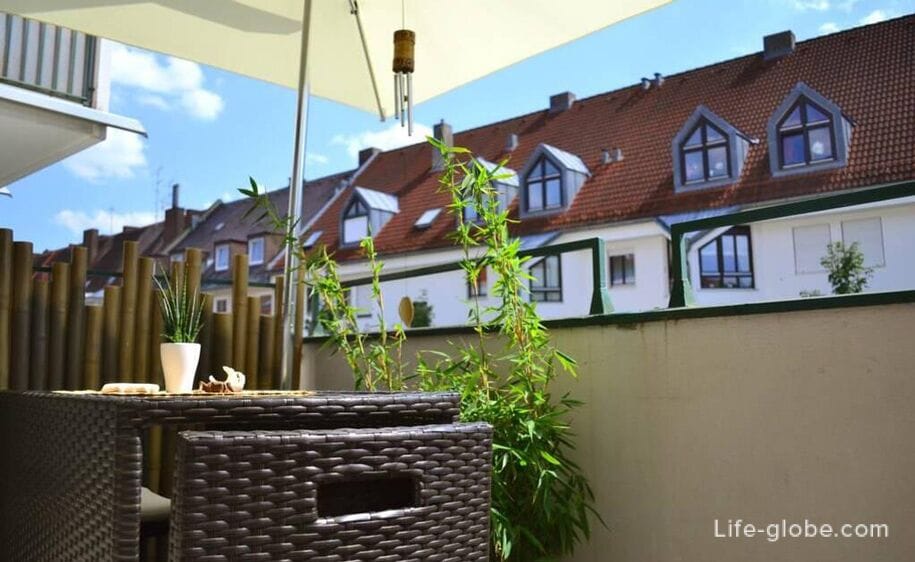
The hotel an der Oper features a restaurant, bar, free Wi-Fi, rooms and apartments.
The Soundproofed rooms and apartmentswith flat screen TV, mini-bar, safe and Hairdryer. Facilities and free toiletries. Link to the hotel

All accommodation in Munich, including near Odeonsplatz in the historic city center, you can view and book here